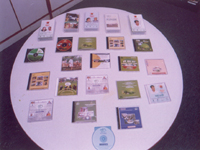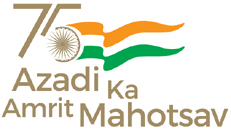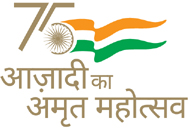



Journal of Agricultural Extension Management
Vol XVIII July - December, 2017 No.2
1. Farmers’ Experiences with Pluralistic Extension System in Promotion of Conservation Agriculture in Chinguluwe Epa of Salima District, Malawi/ Mphatso Mary Magombo
Abstract
Malawi’s current extension policy supports pluralism and advocates responsiveness to farmer demands. This article therefore investigates the experiences of male and female farmers in selected sections with pluralistic extension in promotion of conservation agriculture (CA). The key question addressed in this research is what changes has pluralistic extension system made in case of the farmers practicing conservation agriculture. Within a case study approach, four sections were purposively selected for in-depth qualitative analysis of available services and farmers’ experiences. Focus group discussions were held separately with male and female farmers and key informants followed by semi-structured interviews with 150 farming households. The findings have revealed that few farmers appreciate having access to a variety of sources of technical advice in conservation agriculture. However, most service providers continue to dominate and dictate what they offer such that most of the responses are not relevant to address farmers expressed needs. In addition, the study has revealed that poor coordination between service providers limits exploitation of potential synergies amongst actors. As a recommendation therefore, service providers can adapt their approach to engage farmers in discussion of their needs and work collaboratively to address them. At a system level, institutions that have a coordination function can play a more dynamic role in brokering interaction between providers and farmers to ensure coverage and responsiveness.
2. Gender Perspective in Determinants of Market Supply of Tomato Using Multiple Linear Regression Models/ Almaz Giziew
Abstract
A clear understanding of the determinant factors of market supply in gender perspective helps policy makers. Knowing the determinants among male-headed and female-headed farmers means knowing where to focus to boost production and to improve volume supply. The estimated volume of production of tomato was about 2777.5 tons and 2759 tons of tomatoes were sold in Dugda District, Ethiopia in 2016. Sampled respondents indicated that 99.33 per cent of tomato produced was marketed and the remaining was accounted for by spoilage, seed and home consumption. Out of the total tomato marketed, 79.9 per cent and 20.1 per cent of tomato was marketed by male-headed and female-headed household heads. The multiple linear regression model results indicate that distance from the nearest market center, tomato farming experience, quantity of tomato produced, ownership of water pump, extension service, and social participation played a significant role in tomato quantity supply to the market among female-headed household heads. Family labour and quantity of tomato produced played a significant role in tomato quantity supply to the market among male-headed household heads. Therefore, policy makers should take into account determinants of quantity supplied to the market by female-headed and male-headed farmers separately for taking up appropriate interventions.
3. Agricultural Transition within the ASAL Rural-Urban Continuum in Kenya: a case study of Kajiado County/ Mary Kerubo Morara, Laban MacOpiyo and Wambui KogiMakau
Abstract
Diversification into intensive livestock and crop production systems is replacing pastoral way of life in peri-urban Kajiado County due to declining land holding sizes. This study assessed the transition in two ways: (1) the causes of declining land size, areas of agricultural transition and the main influences (2) the benefits and challenges due to the transition. Data was obtained from cross section surveys, focus group discussions and key informant interviews. The study found out that size of the land owned and origin of household whether indigenous or immigrant influenced livestock and crop production system practised. Intensification in livestock production systems that aim to achieve higher returns from declining land sizes like various types of improved breeds and methods of husbandry have been adopted, whereby 90 per cent of the indigenous and all immigrants have improved livestock breeds. Livestock alien to the area like, fish, pigs and poultry and other emerging ones like ostriches have been adopted. Currently 69.1 per cent of indigenous pastoralists practice crop production to ensure food security while the immigrants practise commercial horticulture under irrigation in greenhouses and along rivers. Competition for resources has culminated into conflicts, degradation and low resilience from natural shocks. The continuous adoption and diversification of agricultural systems including the adoption of alternative income-generating activities needs to be guided through capacity building to enhance and ensure ecosystem sustainability given the fragile nature of the arid and semi-arid area that serves as a wildlife corridor.
4. Stage-Wise Use of Mass Media in Adoption of BRRI Dhan28 by Farmers of Munshiganj District in Bangladesh/ M. Akter, M.H. Bhuiyan and K.Z. Hossain
Abstract
Mass Media Channels (MMCs) play a significant role in technology diffusion. A major part of technology diffusion is innovation-decision, which consists of some stages. Researchers of transfer of technology have so far conducted studies only on effectiveness of MMCs. Use of MMCs at different stages of innovation–decision process was not focused in-depth. The researchers of the present study undertook research highlighting the objectives of determining and describing the stage-wise use of mass media by the farmers in adoption of BRRI dhan28 and exploring the relationship between stage-wise use of MMCs and their selected characteristics. Data were collected from 90 farmers of five villages of Gazaria Upazila under Munshiganj district of Bangladesh, by using a structured interview schedule. The results demonstrated that 95.5 per cent of the respondent farmers had low to medium use of MMCs, 83.30 per cent had medium to high use, 71.10 per cent had low use, 62.20 per cent had medium and 72.20 per cent had low use of MMCs at knowledge, persuasion, decision, implementation and confirmation stages of innovation-decision process, respectively. Television was found to be highly used in every stage of innovation-decision process followed by radio, leaflet, poster and newspaper. The findings also revealed that age, family size, farm size and annual income of the farmers had significant positive relationship with their use of MMCs at different stages of innovation-decision process. On the other hand, education, organizational participation, cosmopoliteness, innovativeness, attitude towards innovation and problems in using innovation had significant negative relationship. Conclusion could be drawn that in transfer of technology, diffusion agencies should have a clear understanding about ‘preferences of stage-wise use of mass media channels of farmers at various stages of innovation-decision process emphasizing on socio-economic characteristics.’
5. Coping Strategy during Farm Distress: a Case Study of Cattle Breed Improvement Program in Andhra Pradesh/ K. Anand Reddy and P. Kanaka Durga
Abstract
The income of the farmers can be improved if other enterprises are taken up by the farmer along with crop husbandry in an integrated manner, as they provide supplementary income to the farmers. This article aims to showcase the importance of the dairy enterprise, through breed improvement interventions, in increasing the farmers’ income by taking a case study of the Cattle Breed Improvement Program of JK Trust. An evaluation of the Cattle Breed Improvement Program (CBIP) was carried out with the help of primary data collected from 240 farmer beneficiaries from 20 villages in four districts. It was observed that the program created awareness among farmers towards the benefits of an improved breed over non-descript cattle. The availability of doorstep services could be seen as a model initiative carried out by J.K. Trust. Increase in employment in terms of man days and increased income of the farmers due to breed improvement interventions are noteworthy. The study suggests that in the event of crop failure, the income of the farmers could be protected by other enterprises such as dairy and more so with the breed improvement interventions. There is an urgent need to spread the National Project for Cattle and Buffalo Breeding (NPCBB )breed improvement program in areas which are not covered to address the farm distress.
6. Animal Husbandry Extension Service Delivery: Farmers’ Perception in Four Major Indian States/ M. A. Kareem, S. S. Phand, P. L. Manohari and M. Borade
Abstract
The present study was conducted to analyze farmers’ perception on the effectiveness of animal husbandry extension services delivery in four major Indian states viz., Karnataka, Maharashtra, Odisha and Uttar Pradesh. Purposive sampling technique was used for the sample selection. A questionnaire was used to elicit information from 80 sample respondents. Data were analyzed using descriptive statistics such as mean, frequency counts, percentages, standard deviation and Kruskal-Wallis test. Results showed that majority of the farmers (48.75 per cent) belonged to middle age group with more than 20 years of experience (41.25 per cent) and majority (91.25 per cent) of the interviewed were full-time farmers in the small farmer (35 per cent) category with 1.1 to 2.0 ha land. With regards to extension contact, the cumulative frequency indicates that animal husbandry officer is the most contacted person as he/she is in touch with farmers in the service area. Thirty-nine practices scaled by 20 farmers from each state on a three-point continuum scale reveal that majority of the farmers were moderately satisfied with the services of animal husbandry officers, with farmers in Maharashtra state being more satisfied followed by Karnataka, Uttar Pradesh and Odisha. Based on the study findings it is concluded that for animal husbandry extension to be efficient, effective and visible, there needs to be more integration among the extension personnel of agriculture and allied sectors. The study recommends a review of extension methods perceived to be non-effective or slightly effective and collaboration among the stakeholders for strong extension services. It will be imperative to ensure that methods considered to be effective are mainly used to deliver extension messages.
7. Strengthening Farmer - Market Linkages/ B K Paty, Shalendra and K C Gummagolmath
Abstract
The Government of India has introduced reforms to promote development of the agricultural marketing sector by encouraging private participation, infrastructure creation and establishment of institutions supporting integrated supply chain. The measures may be slow, sporadic and scanty, but have helped in bringing desired change in the sector as reflected by the progress, made under direct marketing, contract farming and establishment of farmerconsumer markets. The liberal environment of business and trade has led to the evolution of many institutions offering market access to small producers like cooperatives, farmers’ organizations and organized retail. The increasing use of ICT in agriculture marketing has the potential to propel the small farmers placed at the bottom of the pyramid upward by enhancing their income through better dissemination of information and their direct interaction with consumers. The states should come forward to implement the identified reforms, in letter and spirit, of the provisions laid down in the Model Act circulated by the central government to benefit the small and marginal farmers.
8. Impact of DAESI Program on Trained Input Dealers: A Perception Study/ N. Balasubramani
Abstract
Most of the farmers in India seek farm advice from Input dealers. However, majority of these input dealers do not have technical knowledge on Agriculture. Hence, the National Institute of Agricultural Extension Management (MANAGE) launched an innovative program namely, “Diploma in Agricultural Extension Services for Input Dealers (DAESI)” to enhance the technical competency of input dealers. This program is conducted in 11 states. A Perception Study was conducted to analyze the impact of DAESI Program on trained input dealers, by taking 10 per cent of the sample randomly from all the 11 states. The significant findings of the study reveal that there is a positive trend of young people with higher qualifications joining DAESI Program; majority of them are small retailers or selling more than one category of agri inputs; most of the trained input dealers felt that topics covered in the class room, study material given to them and field visits organized were most relevant to them. The level of satisfaction with class room sessions and exposure visits was very good. Majority perceive that they have fully gained Knowledge and Skills on various aspects of agriculture, and gained confidence in technology dissemination, which are sufficient to give suitable advice to field level problems of farmers. Majority felt that their customer base and sale of inputs have increased and they have changed their approach in analyzing the field problems after DAESI Program.
9. Factors Influencing the Entrepreneurial Behaviour of Agripreneurs in Andhra Pradesh/ V Deepthi, P Rambabu and T Gopikrishna
Abstract
This study aims to identify the factors that influence the entrepreneurial behaviour of agripreneurs in three selected districts of Andhra Pradesh i.e. Chittoor, Krishna and Visakhapatnam, which were selected based on the highest number of agri linked enterprises. Two hundred and forty agripreneurs were selected through proportionate random sampling. Expost- facto research design was used in the study. An attempt has been made to evolve a set of factors influencing the entrepreneurial behaviour through a data reduction process of factor analysis. The factors include: need for independence, communication network, innovativeness, achievement motivation, leadership behaviour, entrepreneurial self-efficacy, decision making and business skills. Results reveal that two factors such as entrepreneurial potential and entrepreneurial skill factor accounted for the maximum percentage of the total variance on overall entrepreneurial behaviour of agripreneurs.
10. Crop Based Community KVK - a Predictive Innovative Model of Technology Delivery to Reach the Unreached/ M. Pandiyan, Noorjehan A.K.A. Hanif, M. Senthil Kumar and Joshua Davidson
Abstract
Efforts have been made from time to time to raise the productivity of farmers through extension services but their objectives are still poorly met. The purpose of extension is to disseminate advice to farmers. Gaps in knowledge contribute to the yield gap in biophysical and economic settings. The current extension worker to farmer ratio is very wide in India and hence to address the particular crop in a particular block is very low. The Mandate of Krishi Vigyan Kendra and technology delivery is focussed to particular interventions and is not specific to crop based zone. Technology decision support system is not available within the crop zone and the farmers are unable to get the required knowledge. On the demand side, self-selection on the part of larger, more commercial farmers may bias outcomes. Extension service budgets may be inadequate. Issues of motivation, competence, performance and accountability of extension institutions and their agents may affect results. The main lacunae in reaching small and marginal farmers in rainfed areas for service delivery of technological information’s is limited staff. To overcome these constraints and fulfil demands of the farmers, the proposed predictive innovative model of Crop based Community KVK will certainly play a major role in transferring the technologies through trainings by creating farmer experts and shaping them as unique Cluster Crop Experts in the selected village clusters. Community KVK is an innovative conceptual model designed for technology delivery of farm information to the farming community in cluster villages by establishing similar set up of KVK in villages by training and networking of socially amicable farmers. Upscaling this model, can convert farmer Subject Matter Specialists into paid service consultants and they can excel in comparison to input dealers who do not possess crop based knowledge. Further, marketing linkage can be created through farmers groups like commodity groups, FIGs and other groups.
11. Does Demographics Influence Adoption of Information Technology Devices? – an Understanding of Rural Consumer Behaviour/ Poonam Kumari and Nirupma Gupta
Abstract
The Information Technology sector has immensely contributed to India’s growth story. It has put India’s name on the global map and has been a major contributor towards the growth of Indian economy. This study assesses the ownership of information technology devices among rural consumers, their preferences towards these devices and whether the demographic characteristics have an impact on ownership and preferences of these devices. Data collection from rural consumers was through a structured questionnaire with questions related to the demographic profile of the respondents, currently available information technology devices and factors responsible for not having them and also related to preferred information technology device. Through the study new information has been generated which is useful in assessing the adoption of information technology devices like laptops, computers, smart-phones, tablets, notebook/netbook etc. by rural consumers. It has been observed that, although the penetration of mobile phones has reached a remarkable number, there is a lot more to be done in order to popularise and increase the demand for other technological devices in rural areas.
12. A Case study on Utilization of Common Service Centre among the General Public/ S. Vignesh Kumar and C. Karthikeyan
Abstract
Common Service Centres (CSCs) form a part of the National e-Governance Plan envisioned in providing Government services to the citizens at their doorstep at an affordable cost, and in a sustainable manner. The CSCs are run by Village Level Entrepreneurs (VLEs) as a component of Public-Private Partnership (PPP) model. (Shadrach and Sharma, 2013). Timely delivery of services through CSC has made life easier for both people and government departments and has increased its efficiency. There are a total of 34 Common Service Centres in Coimbatore district. Various Government and Business- to Consumer services like Aadhaar, Telecom services are provided at an affordable cost through CSC. A study was carried out in one representative CSC, drawn as a case, in Kalveerampalayam, Coimbatore. It was conducted as an ex-post facto research study and percentage analysis was used to analyze the data collected. Three-fourth (76.7%) of the respondents were found to have medium level of utilization of various services provided by the CSC, with Aadhaar being the most used (63%) service. It was prevalent mostly among educated and high-income category of people.
13. Future of Farming - Polyhouse Farming/ Rachna Singla and Jasvinder Singh
Abstract
The adverse effects of the green revolution on soil fertility, emergence of new insect pests and diseases and declining water table level have tempted the farmers to consider alternate methods of cultivation which could curb the adverse effects and provide an opportunity to grow crops throughout the year. Protected Cultivation Technology was one such alternative which seemed promising to the farmers. Based on this, Krishi Vigyan Kendra, Patiala conducted training for growers and end-users on the use of complete technology for protected cultivation of high-value vegetables and flowers, including IPM, post-harvest handling, on-farm value-addition, packaging, etc. and marketing. By adopting hi-tech farming practices, Mr. Meharban Singh, a farmer, has become an icon for other farmers of the region. His adoption of modern practices is very rewarding both economically and socially. He is very satisfied with the technological intervention. Judicious use of pesticides on his vegetables has helped him in getting a good price in the market and has enabled him to create a niche for himself. Other farmers of the adjoining areas often seek guidance from him regarding cultivation of vegetables etc. and he personally encourages them to adopt crop diversification as a means to conserve the environment and increase income.
14. Uptake and Pathways in Introducing the Vegetable Crop Capsicum by KVK Khordha, Odisha/ A.K. Dash, P.N. Ananth, S. Singh and P. Jayasankar
Abstract
This paper explains about uptakes and pathways of introducing a new vegetable crop capsicum in Khordha district of Odisha by Krishi Vigyan Kendra (KVK), Khordha. The crop was introduced in 2011 through different extension methods and today more than 550 farmers have adopted this crop replacing chillies. The on-farm trial results indicated that the net income was higher with an increase in yield of 170.8 - 215.1 per cent by adopting capsicum in open field condition compared to farmers’ practice of cultivating green chilli. It was also observed that there was a reduction in yield and quality of capsicum grown during spring-summer in open-field condition. The technology trialed was planting of capsicum and maize in the ratio 4:1 by sowing of maize 45 days after transplanting capsicum. The KVK conducted a trial on intercropping of capsicum with maize. For any crop to be established in the district there is a requirement of employing different extension methods for larger adoption. In this case different extension methods viz., individual, group and mass media were employed for faster reach of this crop. On-farm trials, front line demonstrations, technology week, farmer scientist interactions, field days, exhibitions and trainings were the specific extension methods. During the period all possible ways for larger adoption of capsicum were undertaken by the KVK. The success points in introducing this crop is the availability of capsicum seeds with all input dealers and high market demand. KVK is still helping farmers in providing advisory services for increasing the area under capsicum and also for higher production.
15. Youth in Agriculture: Role of Government Initiatives/ Anshu Rani and Pinaki Roy
Abstract
Youth are the building blocks of a nation. The role of the youth in nationbuilding occupies the central position. Development of youth determines the development of the community and the country as a whole. The socio-economic development and prosperity of the rural areas depend upon the potential youth of the country, as the rural youth have abilities to orient themselves to go along with the main stream of the development process. India both before and after independence has witnessed emergence of youth as a potential force and to reckon with it, the involvement of youth in national developmental activities is necessary. It was felt significantly relevant because of their boundless energy and innate idealism, which could give a positive direction in improving the quality of life. To harness the potential of youth and to take the benefit of demographic dividend holistically, Government of India has announced multifarious schemes. These schemes are based on the principles of social inclusion, gender equality and sustainable development of rural areas. The difference in basic amenities, communication, health and education facilities between villages and urban areas attract youth towards the cities.






